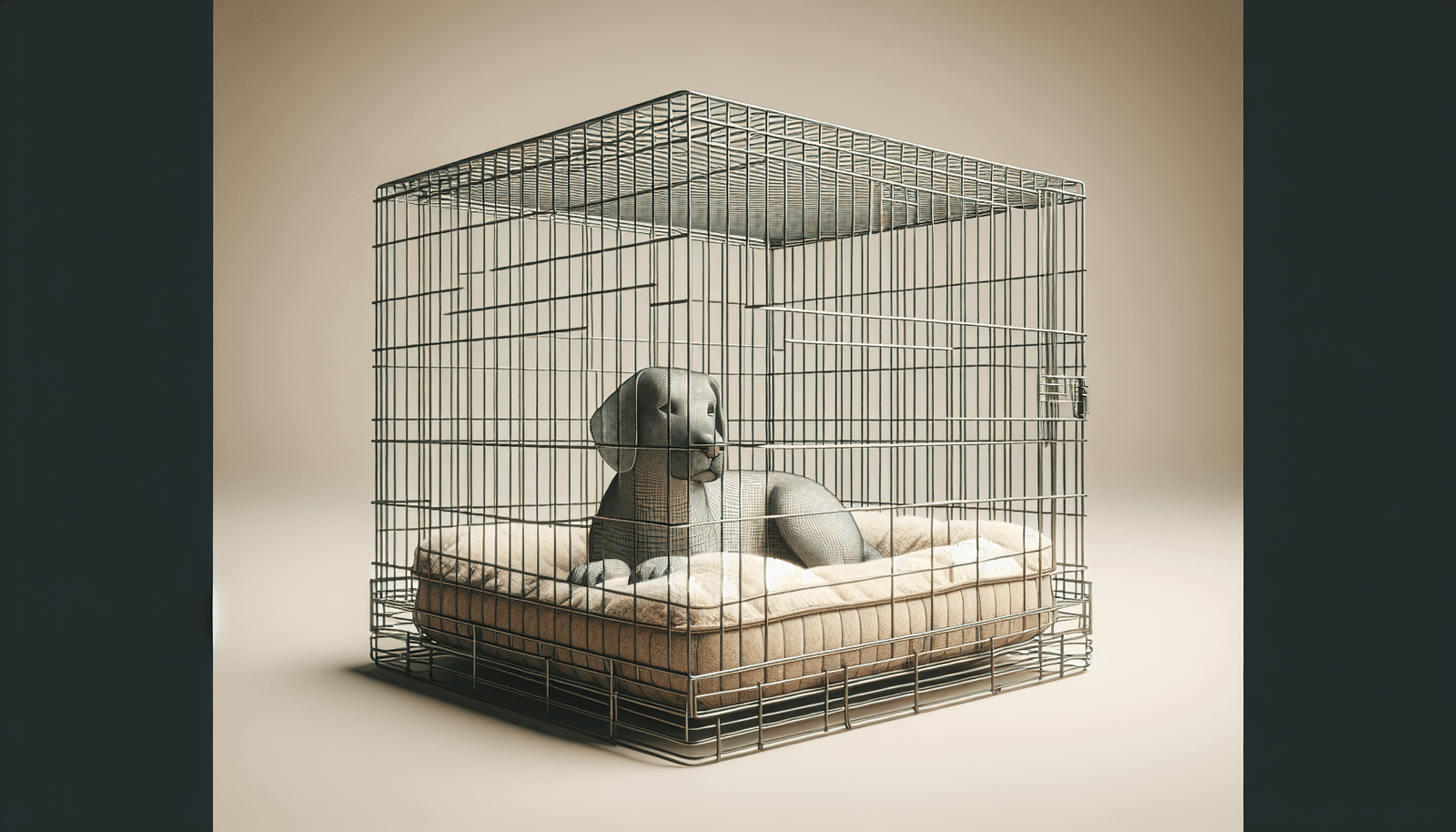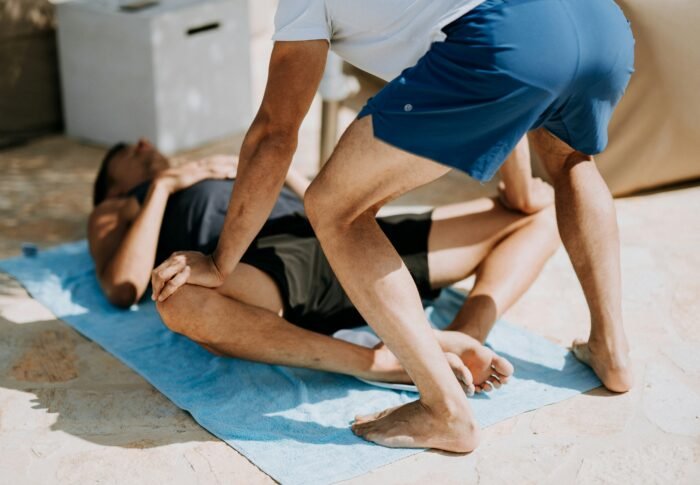
Mastering Crate Training: Essential Tips for Success
You love having your furry friend by your side, but sometimes they need a safe space of their own. That’s where crate training comes in. In this article, we will share essential tips that will help you become a master of crate training. From choosing the right size crate to creating a positive association with the crate, we’ve got you covered. Whether you’re a new dog owner or looking to improve your training skills, these tips will set you and your furry companion on the path to success.
Find products like these on Amazon!
Choosing the Right Crate
Consider the size of your dog
When it comes to crate training, choosing the right crate size is crucial. The crate should be big enough for your dog to stand up, turn around, and lie down comfortably. If the crate is too small, your dog will feel cramped and uncomfortable. On the other hand, if the crate is too big, your dog may feel overwhelmed and anxious. Take the time to measure your dog’s height and length to ensure you select the appropriate crate size.
Choose the right type of crate
There are different types of crates available, including wire crates, plastic crates, and soft-sided crates. Each type has its own advantages and disadvantages. Wire crates provide excellent ventilation and visibility, while plastic crates offer a feeling of security and peace. Soft-sided crates are lightweight and portable, making them perfect for travel. Consider your dog’s needs and your lifestyle when choosing the type of crate that will work best for you.
Ensure proper ventilation
Proper ventilation is essential to ensure your dog’s comfort and safety while in the crate. Look for crates that have adequate ventilation openings to allow for airflow. This will help prevent your dog from overheating or feeling suffocated while inside the crate. Good ventilation also helps control odors and keeps the crate fresh and clean.
Introducing Your Dog to the Crate
Make it a positive experience
When introducing your dog to the crate, it’s important to create a positive association with the space. Start by placing the crate in a quiet and familiar area of your home. Leave the door open and let your dog explore the crate at their own pace. You can encourage them to enter by placing treats or their favorite toys inside. Make sure to provide lots of praise and positive reinforcement whenever your dog goes near or enters the crate.
Use treats and rewards
Using treats and rewards is a great way to encourage your dog to feel comfortable and happy in their crate. Each time your dog willingly enters the crate or stays inside for a short period, reward them with a tasty treat or praise. This positive reinforcement helps your dog understand that their crate is a safe and enjoyable space. It’s essential to be consistent with rewards, especially during the initial stages of crate training.
Start with short periods of time
During the early stages of crate training, start with short periods of time to help your dog adapt gradually. Begin by closing the crate door for just a few minutes while you are still within sight. Slowly extend the duration and distance until your dog becomes comfortable being in the crate for longer periods and when you are out of sight. This step-by-step approach helps your dog build confidence and trust in their new crate.
Creating a Comfortable Environment
Add a comfortable bedding
To make the crate more inviting, add a comfortable bedding that your dog can relax on. Choose a bedding material that is soft, durable, and easy to clean. Avoid using materials that can be shredded or pose a choking hazard. A comfy bed allows your dog to have a cozy and relaxing experience in the crate, making them more likely to view it as their personal space.
Provide appropriate toys
Having appropriate toys inside the crate helps keep your dog entertained and mentally stimulated, especially during more extended crate stays. Opt for toys that are safe, durable, and engaging. Puzzle toys or treat-dispensing toys are excellent choices to keep your dog occupied and entertained while in the crate. Avoid toys with small parts or anything that your dog could potentially chew off and swallow.
Create a den-like atmosphere
Dogs naturally seek out small, enclosed spaces where they feel safe and secure. Mimic this instinct by creating a den-like atmosphere in the crate. Place a blanket or cover over the top and sides of the crate, leaving the front open for ventilation. This helps create a cozy and den-like feel for your dog. The cover can also help block out excessive light and noise, which can be particularly beneficial during nap times or calm moments.
Establishing a Routine
Set a regular feeding schedule
Establishing a regular feeding schedule is essential for crate training. Feed your dog at consistent times each day, ideally in line with their potty schedule. By having set meal times, you can predict when your dog will need to eliminate, making potty training more manageable. Feeding your dog inside the crate can also create positive associations and help them view the crate as their safe place.
Establish a consistent exercise routine
A consistent exercise routine is equally important in crate training. Regular exercise helps prevent excess energy and can promote a calmer demeanor during crate time. Aim to provide your dog with daily exercise and playtime. This can include walks, runs, games of fetch, or other activities that suit your dog’s breed and energy level. A tired dog is more likely to be content in the crate and less likely to become restless or anxious.
Establish a consistent potty schedule
Alongside regular feeding and exercise, it’s crucial to establish a consistent potty schedule. Take your dog outside to their designated potty spot at regular intervals throughout the day. This is particularly important first thing in the morning, after meals, after playtime, and before bedtime. Consistency in their potty routine helps your dog understand when and where they should eliminate, reducing accidents in the crate.
Crate Training Dos and Don’ts
Do: Make the crate a positive space
The crate should always be seen as a positive space for your dog. This means using positive reinforcement, treats, and rewards when they willingly enter or stay in the crate. Decorate the crate with their favorite toys or a comfortable bed. By creating a positive association, your dog will be more motivated to use the crate willingly and happily.
Don’t: Use the crate for punishment
Never use the crate as a tool for punishment. The crate should always be associated with comfort, safety, and relaxation, not negative experiences. If your dog misbehaves or exhibits unwanted behavior, address it through positive reinforcement training methods instead. Using the crate as a form of punishment can create fear and anxiety, making crate training much more difficult.
Do: Gradually increase crate time
To help your dog become comfortable with longer periods in the crate, it’s essential to gradually increase the duration. Start with short periods and gradually extend the time your dog spends in the crate. This allows them to develop patience, calmness, and confidence. Rushing the process can lead to anxiety or reluctance from your dog. Be patient and remember that each dog learns at their own pace.
Dealing with Whining and Barking
Avoid reinforcing the behavior
It can be challenging to resist responding when your dog whines or barks in the crate. However, it’s crucial not to reinforce this behavior by giving in to their demands. Responding to their whining or barking by letting them out of the crate will teach them that this behavior leads to freedom. Instead, wait until your dog is calm and quiet before opening the crate door.
Practice patience and consistency
Dealing with whining and barking requires patience and consistency on your part. It’s important not to scold or punish your dog for vocalizing in the crate, as this can increase anxiety and make the behavior worse. Instead, use positive reinforcement techniques to reward quiet behavior. With time and consistency, your dog will learn that calm and quiet behavior is rewarded with praise, treats, and ultimately, freedom from the crate.
Seek professional help if necessary
If your dog’s whining and barking persist and become a significant issue, it may be beneficial to seek professional help. A certified dog trainer or veterinarian can provide guidance and additional strategies for managing this behavior. They will assess your specific situation and offer personalized advice to address the underlying causes and help you and your dog overcome this challenge.
Teaching Your Dog to Stay Quiet in the Crate
Use a command like ‘quiet’
Teaching your dog to stay quiet in the crate can be accomplished by using a command like ‘quiet.’ When your dog starts to bark or whine, calmly say ‘quiet’ and wait for a few moments of silence. As soon as your dog stops vocalizing, reward them with praise and a treat. Repeat this process consistently to help your dog associate the command with quiet behavior.
Reward quiet behavior
Rewarding quiet behavior is essential to reinforce the desired outcome. Whenever your dog remains quiet in the crate, provide immediate praise and a treat. This positive reinforcement helps your dog understand that being quiet leads to positive consequences. Over time, your dog will learn that staying quiet in the crate is a desirable behavior.
Gradually increase duration of quietness
As your dog becomes more accustomed to staying quiet in the crate, gradually increase the duration of quietness before providing the reward. Start with just a few seconds and gradually extend the time before offering praise and treats. This helps your dog develop patience and self-control, knowing that the longer they remain quiet, the greater the reward will be.
Gradually Increasing Time in the Crate
Extend crate time gradually
Just as you gradually increased the duration of quietness, you should also extend the amount of time your dog spends in the crate gradually. Begin with short intervals and slowly increase the duration as your dog becomes more comfortable and settles down. It’s important not to rush this process, as it can lead to anxiety and setbacks in crate training.
Provide mental stimulation during crate time
To prevent boredom and keep your dog engaged while in the crate, provide mental stimulation. Puzzle toys, interactive feeders, or frozen treats can help keep their minds occupied and provide an outlet for natural instincts. Mental stimulation is particularly important for dogs with high energy levels or those prone to restlessness when confined.
Make the crate a pleasant place
Ultimately, your goal is to make the crate a pleasant and inviting place for your dog. Ensure the crate is well-stocked with comfortable bedding, appropriate toys, and a calm atmosphere. Continue using positive reinforcement and rewards whenever your dog willingly enters or settles in the crate. With time, patience, and consistency, your dog will view the crate as their own special retreat.
Find products like these on Amazon!
Using Crate Training for Potty Training
Establish a potty routine
Crate training can be a valuable tool in potty training your dog. Establish a consistent potty routine by taking your dog outside to their designated potty spot immediately after crate time. This routine helps reinforce the association between crate time and potty breaks. With time, your dog will develop the habit of holding their bladder while in the crate and eliminating outside when given the opportunity.
Use a smaller crate or divider
If you have a puppy or a dog that is still in the potty training phase, using a smaller crate or a divider can be helpful. A smaller crate restricts the dog’s movement, making it less likely for them to have accidents. The restricted space encourages them to hold their bladder and wait for designated potty breaks. As your dog becomes more reliable with potty training, you can gradually increase the size of the crate or remove the divider.
Take your dog outside immediately after crate time
Taking your dog outside immediately after crate time is crucial in reinforcing the potty training routine. Be consistent and take your dog to their designated potty spot every time they are released from the crate. Praise and reward them when they eliminate outside. This helps your dog learn the appropriate place to potty and reinforces the concept of crate time followed by potty breaks.
Troubleshooting Common Crate Training Issues
Escape attempts
Some dogs may try to escape from the crate, especially during the initial stages of crate training. To prevent escape attempts, ensure that the crate is securely closed and that there are no weak spots or loose connections. Additionally, provide mental and physical stimulation outside of crate time to help alleviate restlessness. If escape attempts persist, consult with a professional trainer for additional guidance.
Excessive drooling
Excessive drooling is a common sign of anxiety or stress in dogs. If your dog drools excessively while in the crate, it may indicate that they are uncomfortable or fearful. Take steps to make the crate more inviting and create a positive association through treats, toys, and praise. Gradually increase their time in the crate while monitoring their stress levels. If excessive drooling continues or worsens, seek advice from a veterinarian or a professional trainer.
Whining and barking
Whining and barking are natural ways for dogs to communicate, but excessive vocalization in the crate can be disruptive and concerning. By following the tips outlined earlier, such as avoiding reinforcement of the behavior and teaching a ‘quiet’ command, you can address this issue. Be patient, consistent, and seek professional help if the problem persists or escalates. Remember, crate training is a process, and with time and effort, most dogs can be successfully trained to be calm and quiet in their crates.
Crate training is a valuable tool for both puppies and adult dogs. It provides them with a safe and secure space while helping establish routines and behaviors that contribute to a well-rounded canine companion. By carefully choosing the right crate, introducing your dog in a positive manner, creating a comfortable environment, establishing a routine, using positive reinforcement techniques, and addressing common issues that may arise, you can master crate training with ease. Remember to approach the process with patience, consistency, and a friendly tone, and soon your dog will see the crate as their cozy retreat.
Find products like these on Amazon!
- Choosing the Right Crate
- Introducing Your Dog to the Crate
- Creating a Comfortable Environment
- Establishing a Routine
- Crate Training Dos and Don’ts
- Dealing with Whining and Barking
- Teaching Your Dog to Stay Quiet in the Crate
- Gradually Increasing Time in the Crate
- Using Crate Training for Potty Training
- Troubleshooting Common Crate Training Issues







-
-
1 day
Tagged behavior modification, Techniques, tips